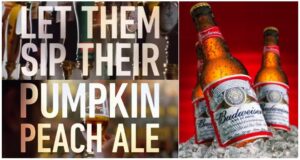By John Fuisz
Recently, Bud Light’s marketing partnership with transgender personality Dylan Mulvaney sparked controversy. In the immediate aftermath, some believed the post and the news cycle surrounding it would expand the consumer base of the brand. Others believed it a fatal error in judgment. The results are in: Anheuser-Busch’s in-store sales plummeted more than 26% as a boycott took hold. Anheuser-Busch hit a negative trigger in its customer base and committed an act of self-harm to its brand. Hitting a negative trigger and harming a client is not an issue limited to commercial brands. Governments can also hit negative triggers in their influence operations. So, what can Anheuser-Busch associating itself with the LGBT+ issues tell us about the unpredictable nature of influence operations?
As the CEO of a behavioral insights company, this controversy struck a chord with me. We have tested the sensitive and context-dependent nature of the benefits and drawbacks when brands use social causes in advertising. We have also monitored the frequently shifting beliefs regarding LGBT+ issues overseas. It is a complex and changing issue.
Social controversies present as part of “culture,” which is a combination of attitude and belief. As attention spans have decreased, belief has become a dominant factor in defining culture. Beliefs vary, and that means cultures can divide and clash. Social issues cause division in the US, and exploiting that division helps our adversaries undermine US interests. In other words, this is a prime area for adversary influence.
Lesson 1: Brands need continuous monitoring of populations.
Incredibly influential marketing campaigns can be executed through a single sponsored post on social media. As such, brands need higher-fidelity information about the beliefs of their target populations. The problem facing brands is that beliefs are hard to measure and are malleable. Beliefs change over time. Beliefs change for different reasons. Beliefs change at different rates.
Let’s look at an example of changing belief on LGBT+ issues. We ran the our system in Poland and Hungary in April-May 2021. In the graph below, the Y-axis represents the confidence of the Polish and Hungarian populations that LGBT+ rights will expand. The X-axis represents weekly data pulls over four weeks. Confidence below 50% indicates a pessimistic outlook in the population. While accuracy of the tool is within 1% (99%+ accuracy) if week-to-week change is less than 1% we consider the change to be effectively neutral.

What is noteworthy? Poland was rather relatively volatile whereas Hungary was not. Look at the dip and rise in the blue line. Views on LGBT+ issues change. They are not static, and that is the key point, beliefs on social issues change and they change at different rates. A social issue that is relatively stagnant in Hungary may be very active in Poland.
Anheuser-Busch may have understood LGBT+ issues in the past and had been fine sponsoring Pride Week and issuing special cans, but life is not static. Beliefs change, some quickly and some slowly. Failing to understand how populations will react can be costly.
Lesson 2: Brands must test key narratives before using them.
The U.S. is not uniform by any means and jumping on social issues without prior testing can be a bad idea. In the case of Anheuser-Busch, their reach into a new desired consumer demographic for Bud Light alienated their current consumers and had a net negative impact.
In October 2020, we were running 6 U.S. panels using the same tool based on ethnicity (Asian, Black, Caucasian, Hispanic, Multiracial and General Population). We wanted to see what impact sponsoring social causes would have and if there would be a difference based on ethnicity. We tested the following article from the BBC to determine its impact on belief:
“Big brands have spoken out in support of black communities following George Floyd’s killing. How as a consumer do you know which companies genuinely support the cause?”
We presented the article to half of the people in each panel and then compared the control panel’s change in belief that week to the test panel. The article negatively biased ALL of the groups, with the lowest negative impact being in the Asian panel and the highest in the Multiracial. The negative backlash was caused by the perception brands were being opportunistic and had no real commitment to the social issue. As one panel member stated:
“People desire empathy from people they can relate to rather than trusting a person [whose] main concern is financial gain.”
Which resulted in our advice in 2020 that if the brand does NOT have a consistent and authentic relationship with a social issue, do NOT advertise into the social issue. Potential customers will more likely than not see the advertisement as financially motivated and not a true commitment to the social issue.
This phenomenon is not limited to the U.S. In May 2021, we ran the tool inside Poland and Hungary to determine how the war in Ukraine was impacting the populations. In addition to monitoring belief change in populations as discussed above, the tool extracts content indicators (nudges) that change belief. In May 2021, issues likely to cause protests in Poland were typified by this comment:
“Inflation, LGBT, controllers”
In Hungary, anything relating to liberal values (e.g. LGBT issues) was a negative nudge that if amplified into the population would induce anti-U.S. belief changes. In both cases, “LGBT” issues were seen as a threat to Polish and Hungarian culture. The reaction in Poland and Hungary is more pronounced than in the U.S., but serves to explain how some social issues can be seen as very threatening to “culture” and result in a boycott.
Testing issues is crucial to make sure your goals are achieved.
Lesson 3: Counter-messaging is just messaging (see Lesson 2).
Anheuser-Busch has successfully participated in Pride Week branding to include special edition bottles wrapped in rainbow colors. Imagine if Anheuser-Busch understood the specific triggers in their sponsored post with Mulvaney. Imagine if instead of replying to the boycott with a patriotic commercial representing ‘heartland America’ that has been interpreted as ham-fisted pandering, the marketing executives were prepared with a message that would win back their consumers.
Content indicators come in two flavors: positive and negative. Use of a negative indicator will hurt belief. Use of a positive indicator will help belief. Anheuser-Busch needed positive content indicators (nudges).
We do not have U.S. data on this issue, but if we pull from data in Poland and Hungary and assume it would apply to the U.S., then an appropriate counter-message might have been “conservative values.” If the U.S. is similar to Poland and Hungary, a counter message that included some reference to “conservative values” would have helped avoid the boycott backlash.
If we dig back through Anheuser-Busch advertisements for material addressing long-standing conservative values in American beer culture, we found the following:

First, note that we are replacing Bud Light with Budweiser. It is the older, more established brand. Budweiser is still the most popular beer in the U.S. It is, for all intents and purposes, the older brother to Bud Light. Anheuser-Busch should have considered bringing in the big brother for the fight.
Then, a grounding ad such as re-airing the 2015 Super Bowl ad would have tied the response to history and emphasized longevity. It would have asserted that Anheuser-Busch’s positioning is not pandering. It is an expression of a long-held view. Reusing a Super Bowl ad emphasizes that the positioning is a long-held belief.
The pumpkin ale commercial started a mini-controversy when it first aired. It was seen as a slight against craft beer drinkers. It equated Budweiser with royalty playing off the “let them eat cake” and belittled the craft beer “drinkers” as “sippers.” It made a statement that longstanding beer traditions are here to stay and will never go away. It espoused traditional values with its implicit appeal to middle class toxic masculinity. It is exactly what Anheuser-Busch needed.
But even then – test! It only takes two weeks to test a message. Testing avoids triggering a bad reaction and optimizes the counter-message.
I am very biased as a CEO of a company that provides belief insights, but the data speaks for itself. Anheuser-Busch’s sales are off massively this year; that should be a warning to both brands and influence operation specialists. Influence is complex, but there are tools available to ensure your message prevails. Use them.
ABOUT THE AUTHOR
John Fuisz is the CEO and Founder at Veriphix Inc.

